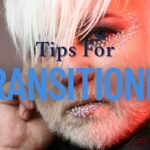Navigating sexual dysfunction, sexual function is often an important part of a relationship. This kind of physical intimacy brings couples closer together with passion and desire and allows for a particular bond that non-sexual partners can’t attain. When sexual dysfunction occurs within a relationship, it can dampen the passion and intimacy and ultimately put a strain on the relationship.
Why does Navigating Sexual Dysfunction feel impossible?
As such, and for the purpose of this article – we are not limiting the definition of sexual activity to penetrative sexual activity but including within that definition the ideas of sexual intimacy as the stimulation of the genitals, being naked together etc. This article will explore sexual dysfunction, types of sexual dysfunctions and how to overcome them to keep the passion alive in a relationship.
What is a Sexual Dysfunction?
Sexual activity occurs as a part of the body’s sexual response cycle and this is driven by desire, arousal and passion. This cycle involves three phases; excitement, plateau, orgasm. The body will undergo changes through each stage of the sexual response cycle indicating arousal and the first stage can include such physiological responses such as the hardening of nipples, increased blood flow to the genitals, increased heart rate and breathing, self-lubrication etc.
The second phase will see the the responses to stage one increase and this will lead to stage three which is sexual climax which entails muscle contractions, ejaculation, sex flush etc. Sexual dysfunction is an issue which affects any of the above stages during sexual activity.

How Can Communication Aid in Navigating Sexual Dysfunction?
Effective communication plays a crucial role in navigating sexual dysfunction within relationships. By openly discussing concerns, desires, and boundaries, partners can foster understanding and empathy.
Communication allows for the exploration of potential solutions and the identification of mutual goals, leading to collaborative efforts in overcoming challenges. Additionally, it creates a supportive environment where individuals feel heard, validated, and empowered to address issues together. Overall, communication strengthens the bond between partners and facilitates the journey toward improved intimacy and sexual satisfaction.
Types of Sexual Dysfunction
We can begin to answer that question by exploring the different types of sexual dysfunction and how it affects both men and women. Sexual dysfunction is traditionally separated into four categories.>
Desire Disorder
Defined as a lack of interest or a distinct lack of sexual desire, often referred to as a low libido. There are often significant issues surrounding the idea of a desire disorder and it is often overly medicated. The stigma is that male libido is thought of as being much higher than women and it is often thought to be ‘cured’ with potions and pills such as Viagra. The recent push for a female Viagra is also problematic as it will complicate the idea of a desire disorder.
People will naturally have highs and lows in terms of their passion and desire levels and this can correlate with age, mental health, physical health, diet, stress and a whole range of issues. Often low libido is medicated without exploring potentially underlying factors within an individual or a couple. Generally, a medical diagnosis will indicate lower than ‘normal’ levels of estrogen in women, and testosterone in men. Not to be confused with Asexuality.
Arousal Disorders
Defined as a body’s lack of response or an inability to become excited or aroused during sexual activity. This is not to be confused with the inability to obtain an erection for men, although this condition used to be classified as an arousal disorder, impotence is now considered to be an erectile dysfunction and not an arousal disorder.
Men suffering from arousal disorder may still be able to gain and maintain an erection (or partial, or none) but the primary factor to an arousal disorder in a male is that they will often receive little to no pleasure in a sexual activity. For females, an arousal disorder can often not become sufficiently lubricated, or no natural lubrication will be released at all.
Orgasm Disorders
Orgasm disorders entail significant delays or inability to climax. Diagnosis is based on failure to achieve orgasm within normal timeframes. For females, it’s akin to anorgasmia, requiring specific conditions. Various factors like illness, medication, or physical issues contribute to these disorders.
Pain Disorders
Defined as experiencing pain during sexual activity. This category is primarily restricted to women, though men can experience pain during sex if they suffer from a form of priapism, or engage in risky sexual activity which tears the membranes of the penis. In women, the majority of pain related disorders are as a result of insufficient lubrication.
The result is that excess friction can tear and disrupt the delicate walls of the vagina and bring forth pain. Anxiety as a result of trauma, bad sexual experience or some other event causing anxiety. Pain may also be caused by a the condition vaginismus – which is a disorder in which the muscles of the vagina will sporadically spasm involuntarily during sexual activity.
Why is Navigating Sexual Dysfunction Essential for Relationship Health?
We are familiar with the idea that sexual functioning and the passion within a relationship changes over time and that’s not to say sex and passion no longer exist, just that it has manifested into something that differs from the beginning of a relationship.
These disorders may exist from the beginning of sexual experimentation, or they may develop after a significant event, or they may develop naturally over the course of time. The reasons for these changes have been well documented and can include relationship quality, a persons age, time together, mental well-being, health and a variety of other factors as well.
Unfortunately, sexual dysfunction is often simplified into two categories: erectile dysfunction for men and low libido for women, leaving other forms overlooked. This pressure disproportionately affects men and women, with women facing fewer treatment options.
Since the causes for female dysfunction are poorly understood the treatments suggesting a cure aren’t necessarily effective in their one size fits all approach. In our next article we will look at ways of overcoming sexual dysfunction and bringing back the passion into the bedroom.
Understanding and Navigating Sexual Dysfunction
Sexual dysfunction is a broad term that encompasses a variety of disorders that can affect both men and women. These conditions can create significant psychological distress and can impact relationships, self-esteem, and overall quality of life. This comprehensive guide aims to provide insight into the various types of sexual dysfunction disorders and their respective treatment options.
Sexual dysfunction refers to a problem that prevents an individual from experiencing satisfaction from sexual activity. This can manifest in many ways, encompassing issues with desire, arousal, orgasm, or pain during intercourse. The causes of sexual dysfunction can be diverse, ranging from physical and medical conditions to psychological factors and lifestyle habits.
Navigating Sexual Dysfunction in Men
Overview
Male sexual dysfunction can take several forms, including Erectile Dysfunction (ED), Premature Ejaculation (PE), and Hypoactive Sexual Desire Disorder (HSDD).
Erectile Dysfunction (ED)
Erectile Dysfunction, often referred to as impotence, is characterized by a persistent difficulty in achieving or maintaining an erection sufficient for sexual activity. It is one of the most common forms of male sexual dysfunction, affecting millions of men worldwide.
Treatment of ED
The treatment of ED often involves a multi-pronged approach, starting with lifestyle modifications such as regular physical activity, maintaining a healthy weight, and avoiding excessive alcohol consumption.
Medication is often the first line of treatment for ED, with PDE5 inhibitors such as sildenafil (Viagra), tadalafil (Cialis), and vardenafil (Levitra) commonly prescribed. These medications work by enhancing the effects of nitric oxide, a natural chemical the body produces to relax muscles in the penis and increase blood flow.
In instances where medication is ineffective, other treatment options may be explored. These can include vacuum erection devices, penile injections, and in more severe cases, penile implants.
Premature Ejaculation (PE)
Premature ejaculation is a condition where a man ejaculates sooner during sexual intercourse than he or his partner would like. This can occur before or shortly after penetration, leading to unsatisfactory sexual intercourse for both partners.
Treatment of PE
The treatment of premature ejaculation often involves a combination of behavioral techniques, counseling, and medication. Behavioral techniques such as the “start-stop” method or the “squeeze” method can help increase the time it takes to ejaculate.
Medications such as selective serotonin reuptake inhibitors (SSRIs), tricyclic antidepressants, and topical anesthetics can also be used to delay ejaculation.
Hypoactive Sexual Desire Disorder (HSDD)
Hypoactive Sexual Desire Disorder is characterized by a persistent or recurrent lack of interest in sex, causing personal distress. It’s considered the most common sexual disorder among men.
Treatment of HSDD
Treatment for HSDD often involves addressing any underlying medical or psychological problems. If the problem is related to medication side effects, adjusting the current medication regimen may be necessary. In some cases, testosterone replacement therapy may be considered.
Navigating Sexual Dysfunction in Women
Overview
Female sexual dysfunction can also take several forms, including Female Sexual Interest/Arousal Disorder (FSIAD), Genito-Pelvic Pain/Penetration Disorder (GPPPD), and Female Orgasmic Disorder (FOD).
Female Sexual Interest/Arousal Disorder (FSIAD)
FSIAD is characterized by an absence or reduction of sexual interest or arousal, manifesting in decreased sexual interest and responsiveness.
Treatment of FSIAD
The treatment approach for FSIAD often involves addressing any underlying physical or mental health issues. Hormone therapy, particularly estrogen and testosterone, can be beneficial for some women. Non-hormonal treatment options, such as the FDA-approved drug flibanserin, are also available.
Genito-Pelvic Pain/Penetration Disorder (GPPPD)
GPPPD is characterized by persistent or recurrent difficulties with vaginal penetration during intercourse, significant pain during intercourse or during attempts to penetrate, fear or anxiety related to pain or penetration, and tensing of the pelvic floor muscles during attempted penetration.
Treatment of GPPPD
The treatment for GPPPD often involves a combination of physical therapy, cognitive-behavioral therapy, and sexual education and counseling. In some cases, topical anesthetics or surgical intervention may be considered.
Female Orgasmic Disorder (FOD)
This disorder is characterized by a marked delay, infrequency, or absence of orgasm, or markedly reduced intensity of orgasmic sensations.
Treatment of FOD
Treatment for FOD often involves sexual education and counseling to address any psychological or relational issues. In some cases, medications such as sildenafil may be considered to enhance sexual arousal and orgasm.

Jennifer is a marketer and sex toy reviewer at Adultsmart! Embracing a non-judgmental stance, she believes in pleasure without limits—if it feels good and right, why not?








Leave a Reply